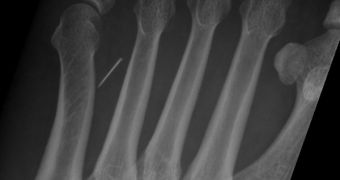Expert radiologists will, from now on, have the possibility to treat victims of self-embedding disorder themselves, as new techniques of identifying objects that were inserted under the skin became available. Both X-ray imaging and ultrasonic guidance can be used to remove all sorts of things from the bodies of teenagers and young adults who exhibit symptoms of the disease.
The self-embedding disorder (SED) has been with the human race since the latter first appeared, doctors say. It is a different form of self-mutilation, mostly employed by children and teens, who insert various types of objects under their skin, including paper clips, bits of glass, plastic and stones, needles and other such things. The behavior has only been recently classified as a disorder, and the first-of-its-kind study on the matter will be presented at the annual Radiological Society of North America (RSNA) meeting.
William E. Shiels II, D.O., the chief of the Department of Radiology at Nationwide Children's Hospital, in Columbus, Ohio, is the main investigator of the current study. He says that "Radiologists are in a unique position to be the first to detect self-embedding disorder, make the appropriate diagnosis and mobilize the healthcare system for early and effective intervention and treatment."
In his study, Shiels and his team followed the cases of 10 young females, aged 13 to 18, who had periodic episodes of SED. Each time the girls came to the hospital, the radiologists used either X-rays or ultrasounds to find the objects that were placed under the skin or in wounds, and remove them. All documented procedures succeeded without a hitch, and not a single fragment broke loose. The removal procedures involved taking out the objects through small incisions, which left little to no scarring.
Shiels says that this method of dealing with those suffering from SED is more efficient than those currently employed, which involve surgery in the affected area. He says that radiologists could easily perform the same tasks, easier and with less pain, if all the appropriate equipment is at their disposal.

 14 DAY TRIAL //
14 DAY TRIAL //